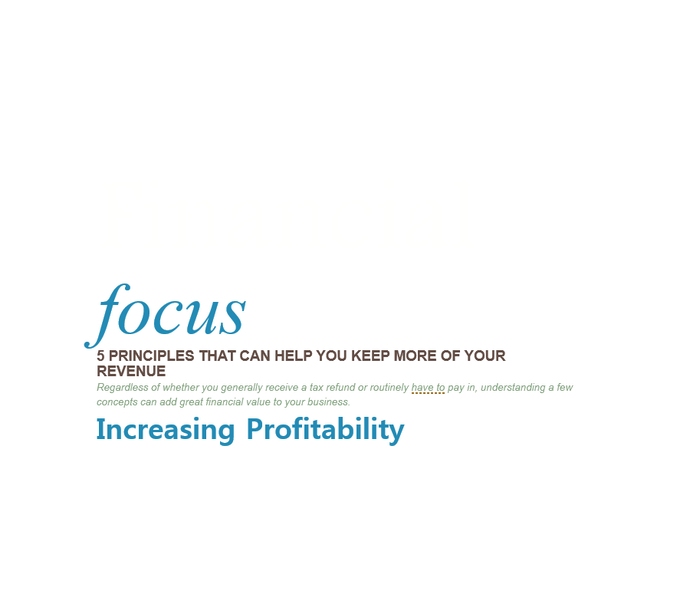Regardless of whether you generally receive a tax refund or routinely have to pay in, understanding a few concepts can add great financial value to your business.
Increasing Profitability
Understanding where your taxation is coming from. Many businesses I talk to don’t have a full understanding of where their tax liability comes from: the difference between income tax and self employment tax. Most often the brunt of a small business tax comes from self-employment tax. Learning to reduce this amount can allow you to keep more of your revenue.
Income shifting. Earned income is taxed differently than passive income. By paying yourself rent to use that office or storage space can shift some of your business profit into passive income, thereby reducing your tax exposure. Shifting income to minor children is another way to possibly reduce your self-employment tax.
Wages vs. Self Employment income. The situation is quite common: a married couple with two incomes, one has W-2 wage income and the other a small business. Commonly I hear, ‘We don’t ever have to pay in.’ What may be happening though is the wage earners federal withholding is offsetting the self employment tax due for their business, consequently reducing their overall tax efficiency. In this case it may be that little to no income tax was due on their household income (having kids helps this even more,) but it was the self-employment tax that was eating additional monies that could have been returned to them. They can then work to decrease the self employment tax to increase the monies refunded or even credited to them.
Reducing taxes with a retirement account. One way for a sole proprietor to reduce profits tax can be to shelter some of it into a Solo-K retirement account. Many small businesses re-invest money into their business instead of saving for retirement for a couple of reasons: One, ‘extra’ money can be tight, and two, they may hope to sell the business at/prior to retirement to make up for this shortfall. One potential advantage of the Solo-K is that the sole proprietor can in effect create their own ‘bank,’ where if he needs access to his monies he can ‘borrow’ it and pay himself back the interest.
Put your expense categorization on auto-pilot. Lack of good business administration leads more than half of all new businesses into the ground in the first year of operation. With new web-based tools that are free you can minimize the time involved in tracking your numbers. One example is waveaccounting.com. You can allow this program to automatically categorize your expenses and income through your bank account so that sorting through those receipts can be a thing of the past. With the click of a button you can see exactly how profitable your running & project throughout the year what your potential tax liability could be, thereby providing you with the advanced knowledge to adjust from time to time in order to best maximize your income against taxation. If you know how to use these concepts to the full you could greatly impact your businesses profitability.
Do you need help with financial planning or retirement planning? Are you looking for a ‘financial consultant near me’? Contact me, Brandon, at 866-360-2724 or email me at info@TheIvyAG.com for an appointment with someone who will take care of you through your retirement.

